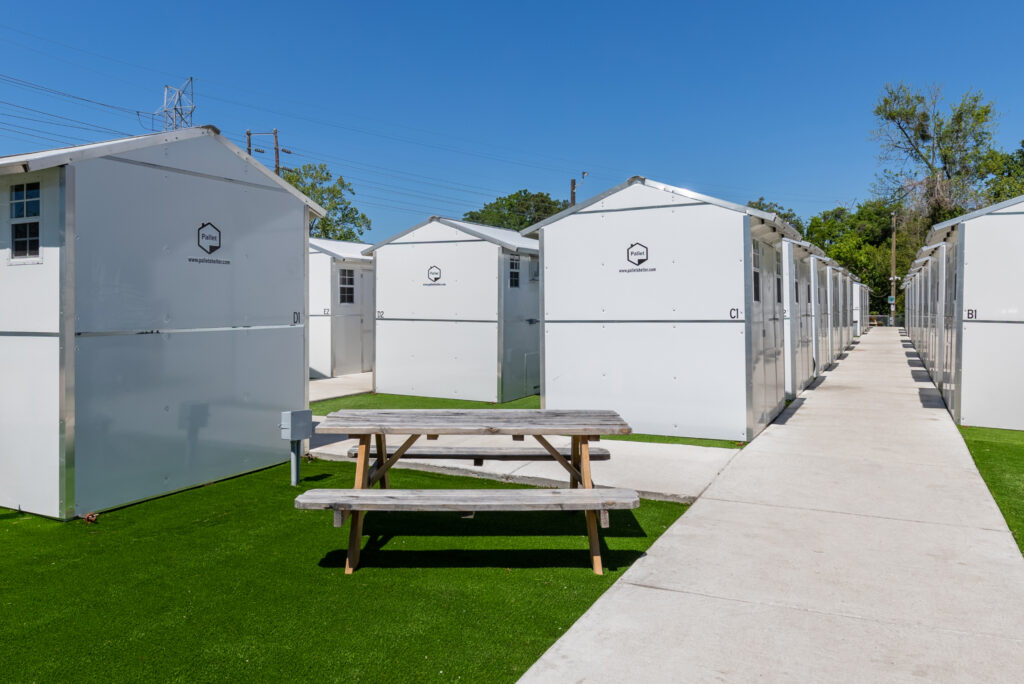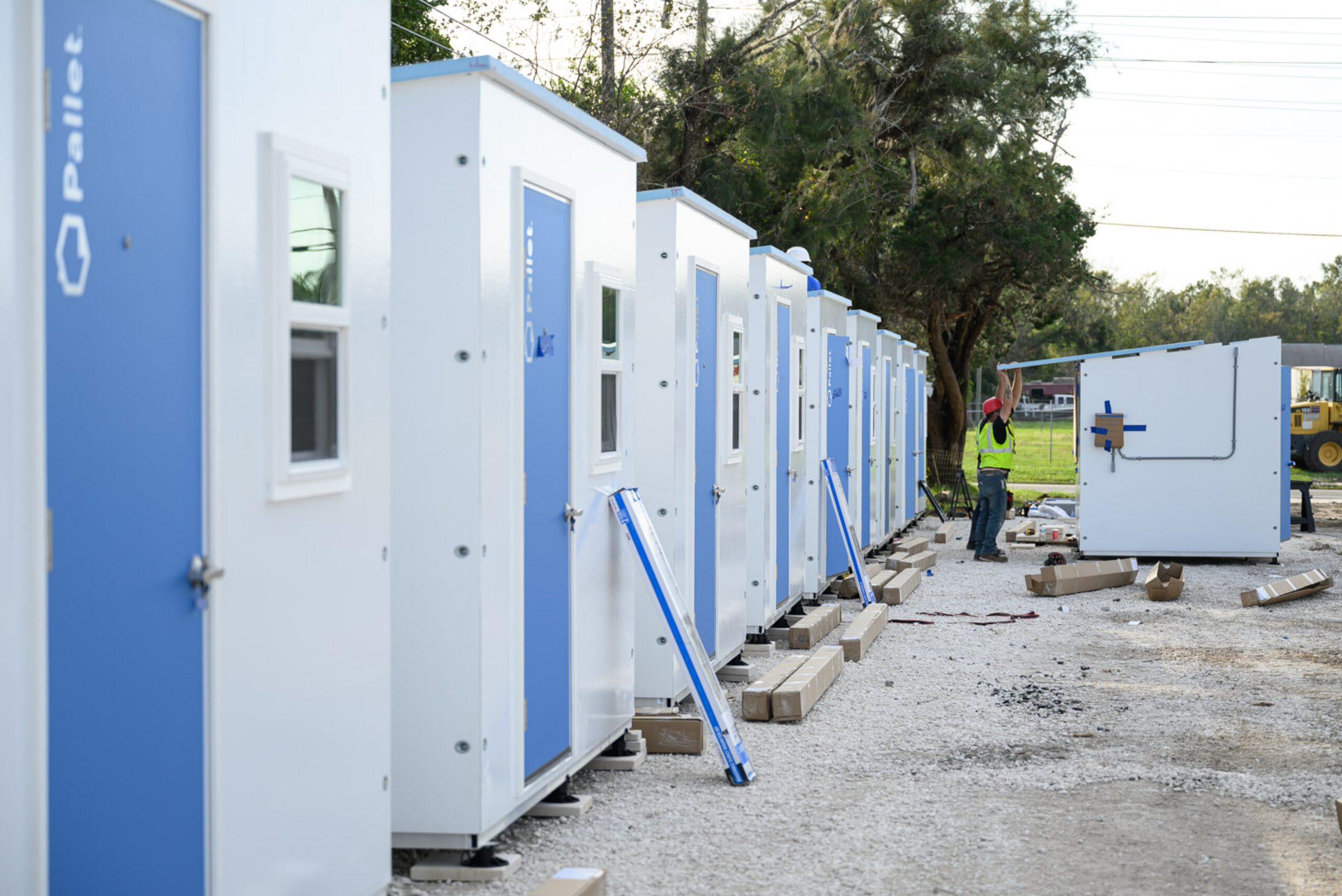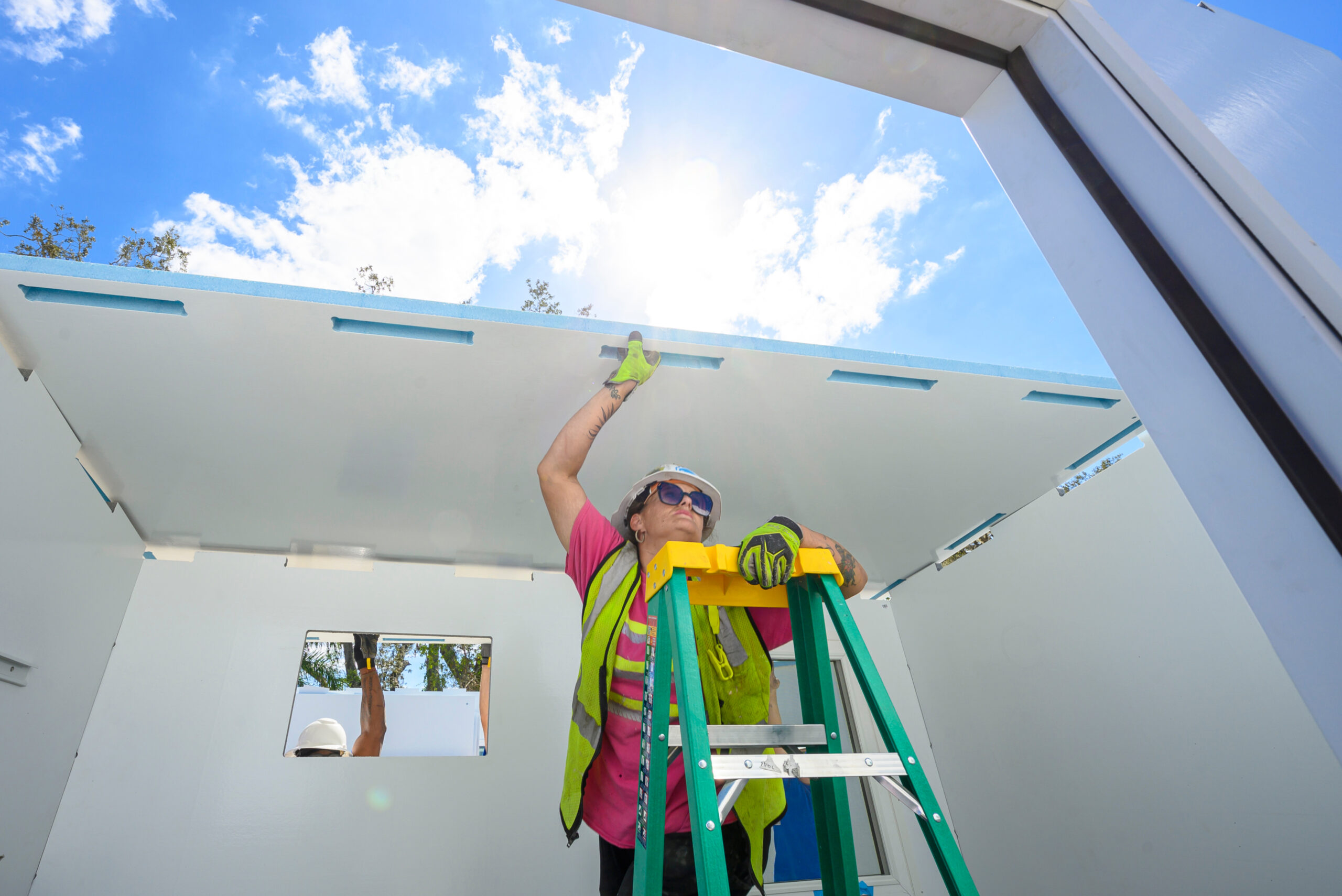What we mean when we talk about interim shelter
June 6, 2023

There are many types of housing to consider in the larger conversation of ending unsheltered homelessness, all with their own benefits. Commonly referred to as the “housing continuum,” the progression for a person experiencing homelessness from sleeping on the street to, eventually, securing permanent housing, is not a linear path. In the same way that no two people are the same, there is no standard route from living unsheltered to finding a stable home.
Interim shelter is the stage in this continuum where Pallet fits in. Compared to congregate shelter (which houses as many people as possible under one roof), and transitional housing (which consists of semi-permanent and permanent structures that are more expensive and time-consuming to develop), interim shelter is its own distinct model. It offers people their own dignified space to take their next steps while being a cost-effective, rapidly deployable model to address unsheltered homelessness.
Lowering the barriers of congregate shelter
Congregate shelters have become an undesirable solution due to health and safety concerns and often come with insurmountable barriers for those experiencing homelessness. Long wait times for a bed and limited operating hours mean that people working night shifts are excluded, and in most cases, everyone is required to leave in the morning—making the search for somewhere to sleep a daily challenge.
Upon entry to the shelter, guests are separated from their possessions, making this temporary stay often seem like a setback. And due to the extremely temporary nature of the model, people seeking work can’t use the shelter as an address in their job applications.
Many people worry for their safety, especially those who have experienced sexual abuse, leading to low-quality (or non-existent) sleep.
Separating guests by age or gender means couples and families are often split up. These shelters also don’t allow pets, which provide vital emotional support for many people experiencing homelessness.
Perhaps above all other reasons, there is an immense shortage of shelter beds to accommodate unhoused communities.
All these barriers speak to the inefficiency of congregate shelter reintegrating people experiencing homelessness: those who spend most of their time and energy struggling to finding somewhere safe to sleep don’t have the resources to take their next steps and sustainably transition out of homelessness.
The interim shelter model lowers these barriers: residents don’t have to worry about relocating each morning; couples, families, and pets are allowed to stay together; and the safety of a private space with a locking door provides solitude and peace of mind.
Faster, more cost-effective, and more adaptable
The transitional housing model is similar to interim shelter but places a focus on building semi-permanent structures that are not designed for rapid assembly and disassembly. Using costly materials leads to a significantly more expensive build-out, especially when scaling the model to accommodate larger unsheltered populations.
Transitional housing options also take a much longer time to build. Homelessness needs to be addressed immediately—the streets cannot act as a waiting room.
The value of building semi-permanent housing is also a question of infrastructure and the goal of ending homelessness. When structures aren’t intended to be disassembled with speed, available land for accessible permanent housing decreases and reintegrating residents is less incentivized.
In comparison, interim shelter villages are less expensive, can be deployed on a much faster timeline, and are operated with wraparound onsite services that provide residents with crucial support. This model fills the gap in the continuum between living unsheltered and permanent housing, all while being adaptable to the changing landscapes of the homelessness crisis in different cities. Interim models also minimize resource distraction from the development of permanent housing supply and innovative home ownership models, which should be prioritized for funding.
Permanent housing is not the immediate solution
Ending unsheltered homelessness entails every person having reliable access to their own stable, permanent home. Unfortunately, breaking into the current housing market is challenging enough, but it becomes exponentially more difficult for people who have experienced homelessness, incarceration, or have a history of mental health or substance use issues.
Before even having a chance to go through the process of finding a home, you need documentation like an ID, social security card, and birth certificate. In many cases, encampment sweeps mean unhoused people have lost these essential documents and need assistance to obtain new copies.
In densely populated areas of the country, it’s not uncommon for unsheltered people to wait years, or even decades, on lists for subsidized affordable housing. This is a clear symptom of larger systemic inequity from underfunded and under-resourced public housing policies.
Regardless of all these barriers, there is a glaring lack of available affordable rental housing—for people with extremely low incomes, there is a shortage of 7.3 million affordable rental homes.
Having access to safe, dignified shelter with onsite services can be a life-changing opportunity for unhoused individuals. Interim shelter addresses the essential needs of our unhoused neighbors with urgency and is a crucial piece of the housing continuum that demands more attention, funding, and community support.
Read Why Rapid Response Interim Shelter is Crucial


